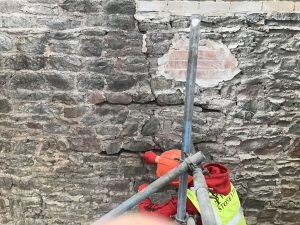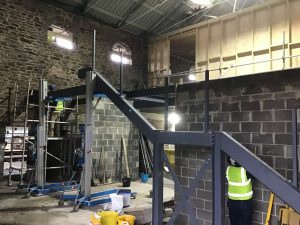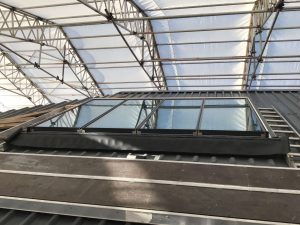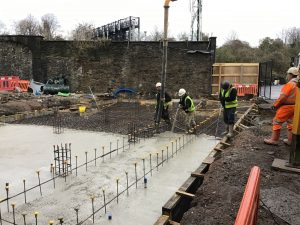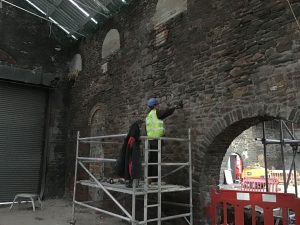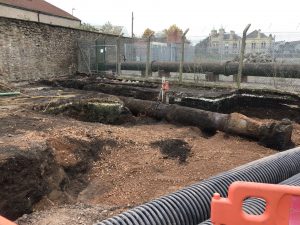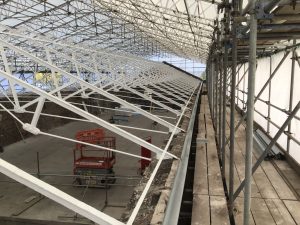Bristol Digital Futures Institute (BDFI) Director of Programmes and Operations, Dr Jenny Knapp takes us through the latest developments in getting our new buildings ready.
This Spring, our research hub will become the first operational building on the University’s new Temple Campus Quarter Enterprise Campus. This first phase, built in what was originally the Bristol Gas Light Company’s Retort House, will house the BDFI offices and exciting new globally unique research facilities including the Reality Emulator, an immersive AR/VR room, the Neutral Lab, Data Centre and training space.
We’re at an exciting stage of the renovation of these exceptional buildings on the old Vauxhall garage site on Avon Street, St Philips. Their beautiful original 200 year old stone walls have been exposed and repointed, the original trusses are secured, and a new roof will soon be revealed. The University’s Capital Projects team is working very closely with architects Allford Hall Monaghan Morris and contractors Aztech Building Services to ensure as much of the fabric of this corner of Bristol’s heritage is maintained as possible. Along the way they’ve found unexpected doors and windows and old industrial pipework – some of these discoveries were more welcome than others!
In 2023 with the opening of the adjacent Coal Shed, we will add further specialist research facilities, partnership, training and meeting spaces. This will also become home to the MyWorld creative hub. The two buildings will become one dynamic new space and eventually we expect to host up to 250 people including staff, researchers, partners and collaborators.
It is a both a privilege and fascinating to expose and renovate such an impressive building that has, for so many years, been hidden away. Each site visit reveals interesting and often stunning new features that we hope to highlight and will contrast with the ultra-modern, world leading facilities which will sit alongside them. We will also find a new life within the building for objects that have been recovered such as cobblestones and some very large light fittings! The excitement is building as we prepare for moving in and we can’t wait to see the old and the new coming together in what we know will be a fantastic and inspirational new place to work and innovate with our partners.
The time lapse video below shows recent works of the renovation of the Retort House. It starts with stone wall cleaning, then the removal of parts of the concrete mezzanine floor slab to make way for a new staircase, this then leads on to removal of the asbestos roof and old roof purlins. Once the roof is removed you can see the temporary roof structure above.


